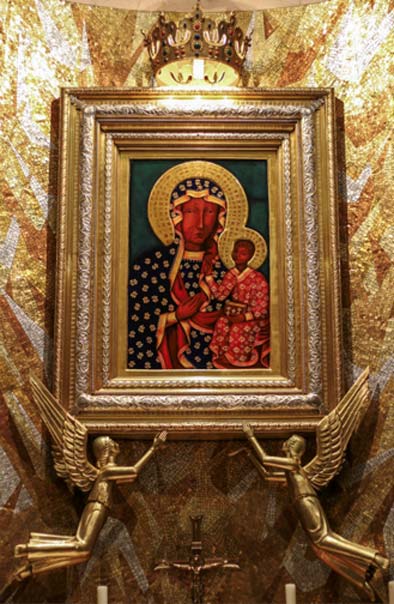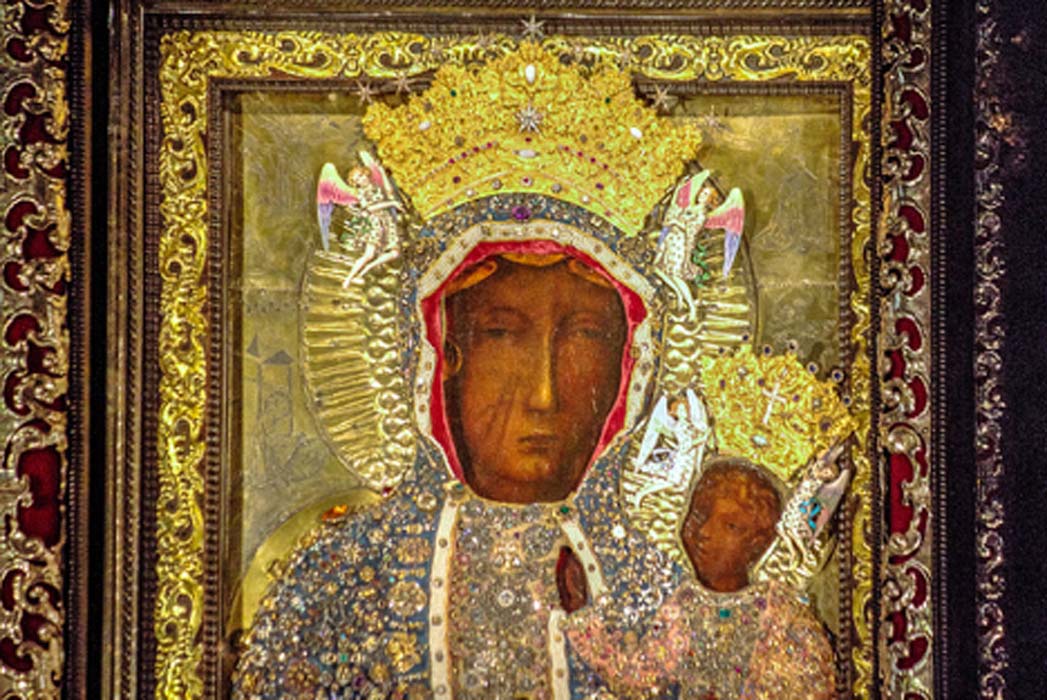Are the Black Madonnas found around the World intentionally so?
‘Black Madonna’ is a term used to describe depictions of the Virgin Mary (usually statues or paintings) that have dark-colored skin. In such images, the Virgin is often shown with the infant Jesus, who, not surprisingly, is also represented with dark skin. The Black Madonna can be found primarily in the Catholic Church. As the Virgin Mary is commonly depicted with fair skin, the Black Madonna may be considered to be an oddity, and various theories have been put forward in order to explain this phenomenon.
Black Madonnas the World over
Statues and paintings of the Black Madonna may be found around the world, though some of the more famous ones are from churches located in Europe. One such example is the Black Madonna of Montserrat, which is housed in the Benedictine abbey of Santa Maria de Montserrat, in Spain. This Black Madonna is known also as the Virgin of Montserrat, and ‘La Moreneta’ (which may be translated to mean ‘the little black lady’).

The original Black Madonna at Montserrat. (CC BY-SA 3.0)
The Virgin of Montserrat
The Black Madonna of Montserrat is a wooden sculpture, and legend has it that it was carved in Jerusalem around the time when Christianity had just begun. According to popular belief, the Black Madonna of Montserrat has dark skin because she is supposed to represent an African version of the Virgin Mary. From historical descriptions of the statue, however, it may be said that the wood had simply darkened over time, hence resulting in the dark skin tone that is seen today.
Our Lady of Czestochowa
Another depiction of the Virgin Mary that became a Black Madonna over time is an icon known as Our Lady of Czestochowa, which may today be found in the Jasna Gora Monastery in Czestochowa, Poland. This icon has quite a colorful history attached to it. According to tradition, the icon was painted by St Luke the Evangelist on a table top made by Jesus himself whilst he was a carpenter. The icon was then found by St Helena during her quest for the True Cross, and presented to her son, the Roman emperor Constantine.

‘Our Lady of Czestochowa’, A replica of the icon of Our Lady of Czestochowa, in the Polish chapel in the Basilica of the National Shrine of the Immaculate Conception, Washington DC. (CC BY-NC-ND 2.0)
About a millennium later, the icon finally arrived in Poland. Miracles have been attributed to the icon. For example, in 1430, the Hussites overran the monastery where the icon was kept. One of the Hussites tried to carry the icon away, but his horse would not move. Furious, the soldier struck the icon twice with his sword, leaving scars on the painting. As the Hussite prepared to strike the icon a third time, he fell on the ground and died. It has been pointed out that this icon acquired its dark skin as a result of centuries of soot and smoke from candles burning before it.
Deliberate Black Madonnas
Yet, not all Black Madonnas were created by accident. Some of them were deliberately depicted with dark skin. This may be seen, for instance, in more recent times, where images of the Virgin Mary created by Africans or African-Americans have a modified physiognomy and skin color so as to reflect those of the artist and his / her intended audience. The important message conveyed by such Black Madonnas is that of the universality of Christianity, and that salvation is offered to all.
- Peculiar Wooden Sculptures Discovered at Chan Chan in Peru and May Mark the Graves of Ancient VIPs
- No Average Artists: Who Was Deemed Good Enough to Create Sculptures of Alexander the Great?
- An Empty Tomb and a Site Full of Faith: Where Was the Virgin Mary Buried?

Black Madonna of Toulous. Basilica Notre-Dame de de la Daurade. (CC BY-SA 4.0)
It may be said that this form of inculturation is not entirely new. Another theory used to explain the existence of the Black Madonnas is that they were based on ancient earth goddesses. Black was considered to be an auspicious color, as it represented the fertility of the soil.
It may be added that the Virgin Mary’s association with the earth through her role as the Black Madonna could have been used to elucidate the beliefs of Christianity. The earth may be connected with both death, and new life, hence be used as a metaphor for Christ’s death and resurrection.
Top image: Black Madonna of Częstochowa with crown. Source: CC BY-SA 3.0
By Wu Mingren
References
Duricy, M., 2018. Black Madonnas: Origin, History, Controversy. [Online]
Available at: https://udayton.edu/imri/mary/b/black-madonnas-origin-history-controversy.php
Harris, E., 2016. Who is 'the Black Madonna' and why is she so important?. [Online]
Available at: https://www.catholicnewsagency.com/news/who-is-the-black-madonna-and-why-is-she-so-important-63754
McFarlane, M., 2018. Mystery of the Black Madonna. [Online]
Available at: https://europeupclose.com/article/mystery-of-the-black-madonna/
montserrat-tourist-guide.com, 2018. Black Madonna at Montserrat: The Image of the Virgin Mary. [Online]
Available at: https://www.montserrat-tourist-guide.com/en/attractions/black-madonna-montserrat-spain.html
Rozett, E., 2018. The Mysterious Black Faces of the Madonna. [Online]
Available at: http://interfaithmary.net/black-madonna-introduction/




















Comments
I have an idea, since so much of ancient religion was based on astronomy, that at least some of these black statues are meant to represent the night sky.
Worth reading the classic book “The Cult of the Black Virgin” by Ean Begg. He puts to rest the idea of candle smoke, aging of wood, etc. The sculptural forms of many of the European Black Madonnas is quite distinct, often Romanesque. And although the figure may be black (if it hasn’t been “restored” to white), the hands are usually large and often white—and the associated figure of Jesus is not black. They are often associated with healing miracles as well and go back much before Christianity—perhaps even representing Isis in her mother guise. JUST read the first comment and I agree with Edward, although I would suggest there is a syncretism at work between the Ancient Earth Goddess and the Virgin Mary.
Hi Edward—great comment. Read it after I wrote mine. Horrifying to think they “restored” the Chartres Black Madonna to white. Glad She is showing her true colors again!
The Black Madonnas are NOT " depictions of the Virgin Mary ". Although the Catholic Church has appropriated all the BMs that are known (as they have done with many other items), she is not associated with orthodox Christianity. Every location where one exists (in statuary form) is also associated with the Templars and with Mary Magdalene, who she represents. In fact, the Church carried out a campaign of attempting to usurp the ministry of Mary Magdalene by proclaiming "Mary the Mother of Jesus" as the "Mother of God". BMs began to appear in Europe during the Crusades as the Templars were returning from sojourns throughout the Middle East and North Africa. They were intentionally dark. Proof of that is that the BM of Chartre Cathedral was recently painted as "white" to reflect the Christian European influence, but recent reports state that the dark color has returned. The dark color of the BMs does NOT come from the smoke of candles and incense. Proof of this comes from the fact that the clothes on them and items around them are never discolored by smoke.